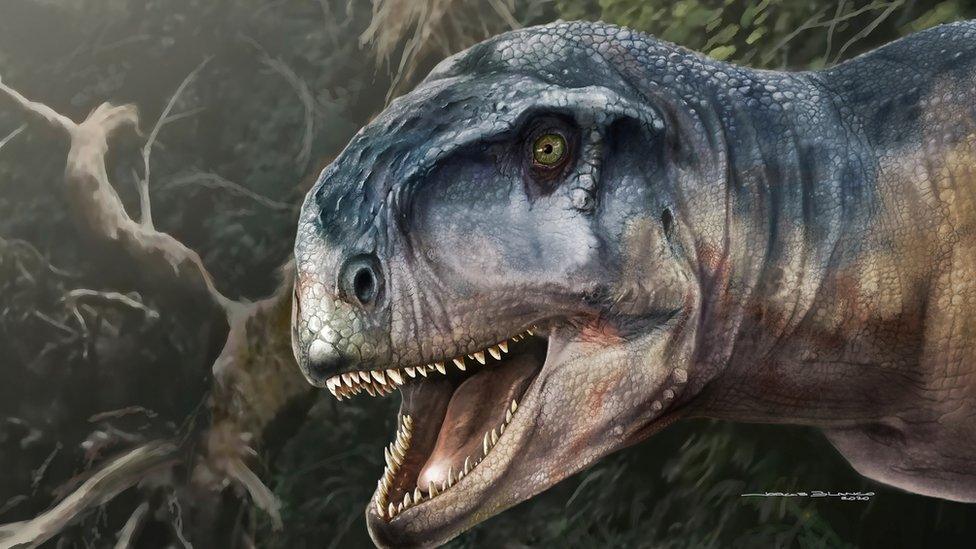'Fearsome' horned dino discovered in Southern-Argentina
- Published
- comments

"The one who causes fear" a Llukalkan aliocranianus whose skull has been discovered in Patagonia
"The one who causes fear" is a pretty scary nickname, don't you think?
Well that's the name given to a new dinosaur - a horned Llukalkan aliocranianus - who's skull has just been discovered in Southern Argentina.
The remains were discovered in Patagonia, and they were actually close by to another meat-eating dinosaurs which is researchers say is unusual.
The "one who causes fear" is similar to the famous T-Rex - it's a 2-legged creature with 2 small arms but is only medium sized compared to the T-Rex.
The dinosaur lived in the cretaceous period - 85 million years ago - which was the last era before dinosaurs became extinct.
Palaeontologists discover fossils which belong species from many years ago. Pictured above is Archaeopteryx, the oldest known bird.
Research that was published in the Journal of Vertebrate Palaeontology contains lots of details on how we could have expected the dinosaur to have looked and acted.
The Llukalkan aliocranianus had short horns, tiny fingers and was about five metres long, researchers also suggest that it had a powerful bite!
Along with its strong bite it also had good hearing, in fact, better hearing that a lot of other dinosaurs which could mean that it was a better hunter than other dinosaurs.
This has led palaeontologists to claim, that along with a strong bite and a big skull, the dinosaur was very fearsome in its heyday.
A new spiky-necked dinosaur species, named the Bajadasaurus Pronuspinax, has been unveiled
The skull of the "one who causes fear" were found close to the remains of a bigger dinosaur called Viavenator exxoni.
The findings of two predators so close together has puzzled researchers, who found it unusual to discover two predators living so close to each other.
Although the Llukalkan is smaller in size compared to the Viavenator, they would have had to share the same prey, according to Mr Gianechini who worked on the journal: "they would have competed with each other and - why not - even eaten each other".
- Published17 May 2019
- Published12 August 2020
- Published2 August 2018
